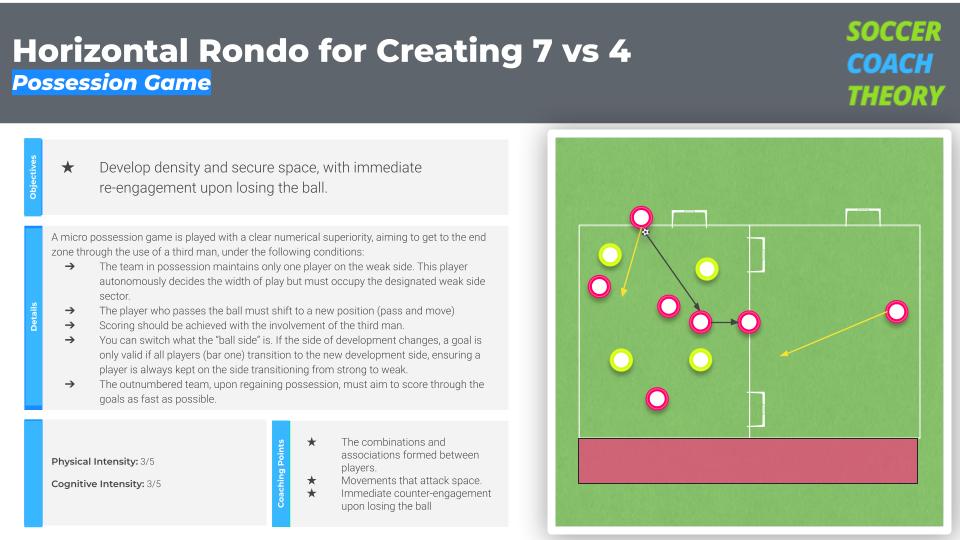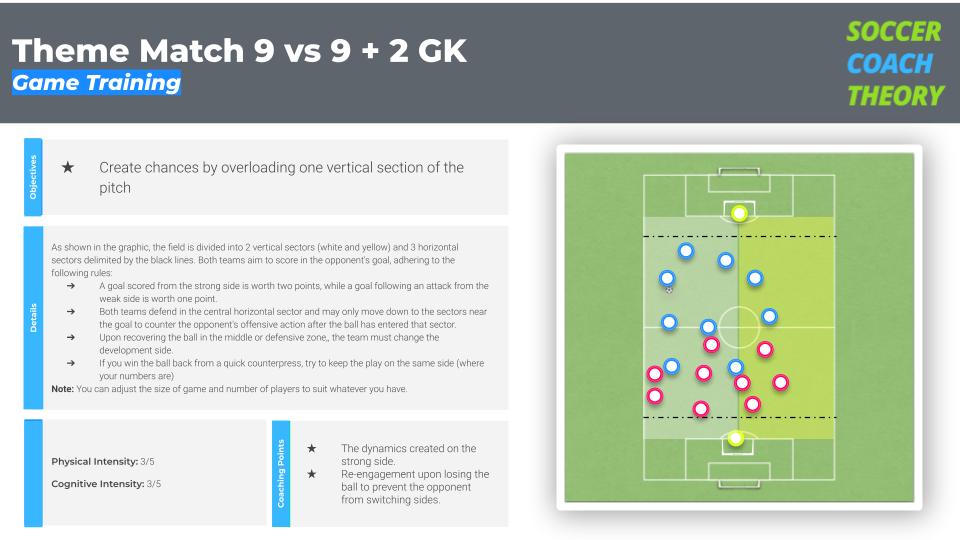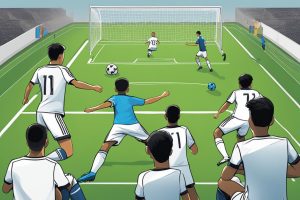Fernando Diniz’s Fluminense: Analyzing Game Model and Training Methods
Fernando Diniz’s Fluminense has been a topic of discussion in the soccer world for quite some time now. The Brazilian coach has been hailed as a revolutionary figure in modern soccer due to his unique game model and training methods. In this article, we will take a comprehensive look at the game model and training methods used by Diniz at Fluminense.
First, we will provide a brief profile of Fernando Diniz, highlighting his career achievements and his impact on modern soccer. Next, we will delve into Fluminense under Diniz, analyzing their offensive and defensive strategies. We will then explore Diniz’s impact on modern soccer and how his game model has influenced other coaches around the world. Finally, we will discuss some of the training drills used by Diniz to develop his players’ skills and play relationist soccer.
Key Takeaways
- Fernando Diniz’s game model and training methods at Fluminense have revolutionized modern soccer.
- Fluminense under Diniz emphasizes offensive strategies, such as possession-based play and a focus on the number 10 role.
- Diniz’s impact on modern soccer can be seen in the way other coaches have adopted his game model and training methods.
Fernando Diniz: A Brief Profile
Fernando Diniz Silva is a Brazilian professional football coach and former player born on March 27, 1974. He is currently the head coach of Fluminense, one of Brazil’s top football clubs, and the interim head coach of the Brazil national team.

As a player, Diniz played as a midfielder for several Brazilian clubs, including Fluminense, Palmeiras, and Santos. However, he is best known for his coaching career, which started in 2007 with the youth teams of Paulista.
Diniz’s coaching philosophy is centered around a possession-based game model that emphasizes quick and accurate passing, high pressing, and a strong work ethic. He is often compared to Pep Guardiola, the legendary coach of Manchester City, for his innovative and modern approach to the game. Although, in actual fact, both of their tactics are very different. While Guardiola uses a positional play strategy, Deniz uses a more functional or relational approach to the game.
Diniz’s coaching career took off in 2016 when he led Audax to the final of the Campeonato Paulista, one of Brazil’s most prestigious football competitions. Despite losing the final to Santos, Diniz’s team won widespread acclaim for their attractive and attacking style of play.
Since then, Diniz has coached several other Brazilian clubs, including Athletico Paranaense, Santos, and Sao Paulo. However, it is with Fluminense that he has achieved his greatest success, leading the team to a Copa do Brasil title in 2022 and a Campeonato Carioca title in 2023.
Off the field, Diniz is known for his meticulous attention to detail and his innovative training methods. He often uses technology to analyze and improve his team’s performance, and he is not afraid to experiment with new tactics and strategies.
Overall, Fernando Diniz is one of the most respected and admired coaches in Brazilian football today. His commitment to the beautiful game and his dedication to excellence make him a role model for aspiring coaches and players alike.
Fluminense Under Fernando Diniz

Fernando Diniz took over as the head coach of Fluminense in 2019, and since then, he has implemented a unique playing style that has earned him a reputation as a “hipster coach” in the football world [ESPN]. His approach is centered around fluid possession-based tactics that prioritize constant approximation and numerical superiority [SIGames].
Diniz’s preferred formation is a narrow 4-2-3-1/4-2-2-2, which allows his players to interchange positions and maintain a free-flowing structure [SIGames]. This approach has revived the classic number 10 role, which is now occupied by PH Ganso, and has allowed Fluminense to dominate possession and create numerous scoring opportunities [TFA].
Under Diniz’s tutelage, Fluminense has become a team that is comfortable on the ball and capable of breaking down even the most stubborn defenses. They are patient in possession, but also quick to transition from defense to attack when the opportunity arises [TFA]. This approach has led to Fluminense scoring some spectacular goals, which have been praised by fans and pundits alike.
Diniz’s training methods are also unique, with a focus on improving his players’ technical ability and decision-making skills [Wikipedia]. He uses a variety of drills and exercises that are designed to simulate game situations and help his players make better decisions on the field [SIGames]. This approach has helped Fluminense become a team that is not only comfortable on the ball but also capable of making intelligent decisions in high-pressure situations.
Overall, Fernando Diniz’s approach has transformed Fluminense into one of the most exciting teams to watch in Brazilian football. They play with a confidence and swagger that is rare in modern football, and their unique style has earned them many admirers around the world [ESPN].
Offensive Strategies
Fernando Diniz’s Fluminense team is known for its “relational football” style, which emphasizes fluidity, minimally defined positions and roles, and spontaneous associations among players. In the possession phase, the team focuses on developing play on the strong side to create lateral density and seeks lateral penetration through combinations adhering to technical principles like “toco y me voy” (pass and move), “tabela” (play forward and backward), and “escadinhas” (creating diagonal positionings on multiple vertices).
The team’s offensive phase relies heavily on the individual technical prowess and decision-making abilities of its players. The possession phase might appear impromptu at first glance, but it adheres to principles rooted in the continuous associations among its players. The team’s positive transition is not strictly codified but heavily leans on ball management post-recovery, enabling the Tricolor to reconstruct its passing network with the aforementioned developments.
One of the key concepts of Fluminense’s offensive strategy is “toco y me voy,” which means “I play and I go.” This principle involves the player’s immediate movement following the pass’s release – otherwise known as a ‘give and go’. In Relationism, players are free to move in much larger spaces, and they can explode forward at any moment. This movement occurs far less often in positional play, where players are encouraged to make small movements within their zones to open passing lines at the appropriate moment.
In addition to “toco y me voy,” Fluminense’s offensive strategy also heavily relies on the “tabela,” which is the play of “one-two.” Literally meaning “table,” the tabela is found wherever Relationist football is played. For the player who desires to toco y me voy, there must always be a teammate available to tabela with. Together the two players approach each other with the proposal to “make a table.” They build the tabela together—a raised platform from where some higher ground can be seen.
Fluminense’s offensive strategy is not strictly codified, and the team relies on the players’ individual technical abilities and decision-making skills. The team’s positive transition heavily leans on ball management post-recovery, enabling the Tricolor to reconstruct its passing network with the aforementioned developments.
Defensive Strategies
Fernando Diniz’s Fluminense team employs a high-pressing defensive strategy during the non-possession phase. This strategy involves constant pressure on the opposition, with a focus on departmental work to disrupt their play. The team seeks to avoid rebuilding initial positions in the defensive phase, which could be counterproductive and give the opposition an advantage.
In addition to the high-pressing strategy, Fluminense also employs a strong, forward reaggression during the negative transition. This means that the team quickly moves forward to regain possession of the ball after losing it, preventing the opposition from changing the direction of play and catching Fluminense defenseless.
To support the team’s attacking style of play, Fluminense often brings many players to the side lanes during the game’s construction. This imposes a need for immediate reconquest in order to prevent the opposition from exploiting any gaps in the defense. Therefore, the team’s defensive strategy relies heavily on a rapid and aggressive approach that allows them to maintain control of the game.
Overall, Fernando Diniz’s Fluminense team employs a highly coordinated and aggressive defensive strategy that is designed to disrupt the opposition’s play and maintain control of the game. By focusing on constant pressure and quick, forward reaggression, the team is able to prevent the opposition from exploiting any gaps in the defense and maintain a dominant position on the field.
Deniz’s Impact on Modern Soccer
Fernando Diniz’s impact on modern soccer is undeniable. The Brazilian coach, who is currently in charge of Fluminense and the Brazilian national team, has become a hero of football hipsters all over the globe ESPN. His innovative style of play and training methods have garnered attention from coaches and analysts alike.
Diniz’s game model is based on a fluid system of relationships between players, rather than a rigid positional structure. This approach allows players to move freely and adjust their positioning in relation to the ball carrier, providing vertical passing options and creating numerical superiority in different areas of the pitch. This fluidity of movement and positioning is similar to the relationist principles employed by Henrik Rydström, the head coach of Malmö FF Scout Report.
Diniz’s training methods are also innovative. He emphasizes the importance of individual technical skills and small-sided games, which allow players to develop their decision-making and creativity in tight spaces. He also uses video analysis extensively, breaking down games and training sessions into small segments to identify areas for improvement.
Diniz’s impact on modern soccer is not limited to Brazil. Coaches around the world have taken notice of his innovative approach, and his influence can be seen in the tactics and training methods of many top teams. His legacy as a pioneer of modern soccer is already secure, and it will be fascinating to see how his ideas continue to evolve and shape the game in the years to come.
Training Drills to Play Relationist Soccer
Functional Technique – Combinations for Creating Relationships Between Players

Instructions
Objectives
- Crafting combinations that facilitate the conquest of a space.
Details
- The drill initiates with player A passing vertically to B. B receives and sends the ball to C, who then drives the ball to enter the space, where three players await. Within the highlighted area, an uncoded combination should unfold with the aim of delivering the ball to a teammate in the space beyond the rectangle.
- The recipient then passes the ball to D, who is waiting.
- The combination within the white space should adhere to the following developmental principles: Pass and move; forward diagonal drives; play swiftly.
Note: To maintain flow in the game, two balls are utilized simultaneously. Once D is reached, the combination commences on the opposite side. Players rotate according to the number.
Physical Intensity: 2/5
Cognitive Intensity: 3/5
Coaching Points
- The dynamics formed during combinations.
- The timing during interactions.
More Information
One of the key objectives of Fernando Diniz’s Fluminense game model is to craft combinations that facilitate the conquest of space. To achieve this, the team uses a drill that starts with player A passing vertically to B. B receives and sends the ball to C, who then drives the ball to enter the white space, where three players await. Within the highlighted area, an uncoded combination should unfold with the aim of delivering the ball to a teammate in the space beyond the rectangle. The recipient then passes the ball to D, who is waiting.
The combination within the white space should adhere to the following developmental principles: pass and move, forward diagonal drives, and play swiftly. To maintain flow in the game, two balls are utilized simultaneously. Once D is reached, the combination commences on the opposite side. Players rotate according to the number. The dynamics formed during combinations and the timing during interactions are important observation points. The number of players developing within the white rectangle can be adjusted.
Horizontal Rondo for Creating 7 vs 4

Instructions
Objectives
- Develop density and secure space, with immediate re-engagement upon losing the ball.
A micro-possession game is played with a clear numerical superiority, aiming to get to the end zone through the use of a third man, under the following conditions:
Details
- The team in possession maintains only one player on the weak side. This player autonomously decides the width of play but must occupy the designated weak side sector.
- The player who passes the ball must shift to a new position (pass and move)
- Scoring should be achieved with the involvement of the third man.
- You can switch what the “ball side” is. If the side of development changes, a goal is only valid if all players (bar one) transition to the new development side, ensuring a player is always kept on the side transitioning from strong to weak.
- The outnumbered team, upon regaining possession, must aim to score through the goals as fast as possible.
Physical Intensity: 3/5
Cognitive Intensity: 3/5
Coaching Points
- The combinations and associations formed between players.
- Movements that attack space.
- Immediate counter-engagement upon losing the ball
More Information
The Horizontal Rondo drill aims to develop density and secure space, with immediate re-engagement upon losing the ball. The drill is played as a micro-possession game with a clear numerical superiority, aiming to conquer the goal sector by inserting a third man. The team in possession maintains only one player on the weak side. This player autonomously decides the width of play but must occupy the designated weak side sector. The player who passes the ball must shift to a new position. Scoring should be achieved with the involvement of the third man.
If the side of development changes, a goal is only valid if all players (bar one) transition to the new development side, ensuring a player is always on the side transitioning from strong to weak. Upon regaining possession, the outnumbered team must aim to score through the goalposts. Combinations and associations formed between players, movements that attack space, and immediate counter-engagement upon losing the ball are important observation points. Depending on the desired conditioning load, the pressing players can be rotated periodically or upon achieving a goal.
Non-Directed Fluid Possession 7 vs 7 + 4 J

Instructions
Objectives
- Manage possession by continuously changing position.
Details
7 vs 7 + 4 J is played on a rectangular field divided into four sectors. The objective for the two teams is to manage the possession by respecting these rules:
- The player who passes the ball must move, either occupying a space within the field or moving laterally within their sector.
- To offer options to the ball holder, teammates may change spaces even without receiving a pass.
- Jokers align with the team in possession and can freely move within any of the four sectors. If a joker moves, a player from the possessing team must occupy the space the joker vacates (players rotate).
- The team in possession must avoid horizontal passes from one space to another and earns a point after completing 8 consecutive passes.
Note: The game proceeds continuously. If the blue team (for example) regains possession, their objective becomes managing possession and then spreading wide along the field’s flanks.
Physical Intensity: 3/5
Cognitive Intensity: 5/5
Coaching Points
- Player movements across the pitch.
- The spaces players occupy both post-pass and in relation to teammates.
- Counter-pressing following a lost ball.
More Information
The Non-Directed Fluid Possession drill aims to maintain possession through continuous positional rotation. The drill is played 7 vs 7 + 4 jokers (J) on a rectangular field divided into four sectors. Both teams aim to manage possession while adhering to the following rules: the player who passes the ball must move, either occupying a space within the field or moving laterally within their sector. To offer options to the ball holder, teammates may change spaces even without receiving a pass. Jokers align with the team in possession and can freely move within any of the four sectors. If a joker moves, a player from the possessing team must occupy the space the joker vacates.
The team in possession must avoid horizontal passes from one space to another and earns a point after completing eight consecutive passes. Player movements across the pitch, the spaces players occupy both post-pass and in relation to teammates, and counter-pressing following a lost ball are important observation points. The game proceeds continuously. If the blue team (for example) regains possession, their objective becomes managing possession and then spreading wide along the field’s flanks.
Theme Match 9 vs 9 + 2 GK

Instructions
Objectives
- Create chances by overloading one vertical section of the pitch
As shown in the graphic, the field is divided into 2 vertical sectors (white and yellow) and 3 horizontal sectors delimited by the black lines. Both teams aim to score in the opponent’s goal, adhering to the following rules:
Details
- A goal scored from the strong side is worth two points, while a goal following an attack from the weak side is worth one point.
- Both teams defend in the central horizontal sector and may only move down to the sectors near the goal to counter the opponent’s offensive action after the ball has entered that sector.
- Upon recovering the ball in the middle or defensive zone,, the team must change the development side.
- If you win the ball back from a quick counterpress, try to keep the play on the same side (where your numbers are)
Note: You can adjust the size of the game and the number of players to suit whatever you have.
Physical Intensity: 3/5
Cognitive Intensity: 3/5
Coaching Points
- The dynamics created on the strong side.
- Re-engagement upon losing the ball to prevent the opponent from switching sides.
More Information
The Theme Match drill aims to progress and finish by leveraging lateral overload. The field is divided into two vertical sectors (white and yellow) and three horizontal sectors, separated by black lines. Both teams aim to score in the opponent’s goal, adhering to the following rules: a goal scored from the strong development side is worth two points, while a goal following an attack from the weak side is worth one point. Both teams defend in the central horizontal sector and may only move down to the sectors near the goal to counter the opponent’s offensive action after the ball has entered that sector.
Upon recovering the ball, the team must change the development side. The dynamics created on the strong side and re-engagement upon losing the ball to prevent the opponent from switching sides are important observation points. The number of players can be adjusted to suit the team group.
Conclusion
In conclusion, Fernando Diniz’s game model and training methods have proven to be highly effective during his tenure at Fluminense. By focusing on functional attacking play, Diniz was able to create a team that was both entertaining to watch and successful on the pitch.
Diniz’s tactics were centered around a 4-2-3-1 formation, which allowed for a high level of fluidity and movement in attack. The team was able to create numerous chances and score goals from a variety of positions on the pitch. Additionally, Diniz’s emphasis on quick ball movement allowed Fluminense to dominate possession in many of their matches.
Off the pitch, Diniz’s training methods were equally impressive. He placed a strong emphasis on physical fitness and conditioning, which helped his players maintain a high level of intensity throughout matches. Additionally, Diniz’s attention to detail in training allowed his players to execute complex tactical maneuvers with ease.
Overall, Fernando Diniz’s time at Fluminense was marked by a commitment to attacking football and a dedication to player development. While he has since moved on to other clubs, his influence on Fluminense’s playing style and training methods will be felt for years to come.
Frequently Asked Questions
What formation does Fernando Diniz typically use for Fluminense?
Fernando Diniz is known for his preference for a 4-2-3-1 formation in which the team is set up to play a possession-based game. This formation has been used consistently by Diniz throughout his time at Fluminense, and it allows the team to control the game and create chances through a patient buildup play.
What are some of the key tactics employed by Fernando Diniz with Fluminense?
Diniz’s tactics are centered around possession and quick transitions. He encourages his players to play short passes and move the ball quickly in order to create space and opportunities. Diniz also emphasizes the importance of pressing and winning the ball back quickly when it is lost.
How does Fluminense’s style of play differ from other Brazilian teams?
Fluminense’s style of play under Diniz is unique in Brazilian football. While many teams in Brazil focus on attacking quickly and directly, Diniz’s team prioritizes possession and patient buildup play. This approach has led to Fluminense being one of the most exciting and entertaining teams in the Brazilian league.
What role does Relationism play in Fernando Diniz’s game model?
Relationism is a key component of Diniz’s game model. It is a concept that emphasizes the importance of relationships between players on the field. Diniz believes that the success of a team is dependent on the quality of relationships between players, and he works to foster strong relationships between his players both on and off the field.
Who are some of the key players in Fernando Diniz’s Fluminense squad?
Fluminense has a number of talented players who have thrived under Diniz’s coaching. Some of the key players in the squad include goalkeeper Marcos Felipe, midfielder Nene, and striker Fred. These players have been instrumental in Fluminense’s success under Diniz.
What training methods does Fernando Diniz employ to implement his game model?
Diniz’s training methods are focused on improving the technical ability of his players and preparing them for the demands of his possession-based game model. He places a strong emphasis on small-sided games and drills that focus on passing, movement, and quick transitions. Diniz also works to develop strong relationships between his players through team-building exercises and activities.







